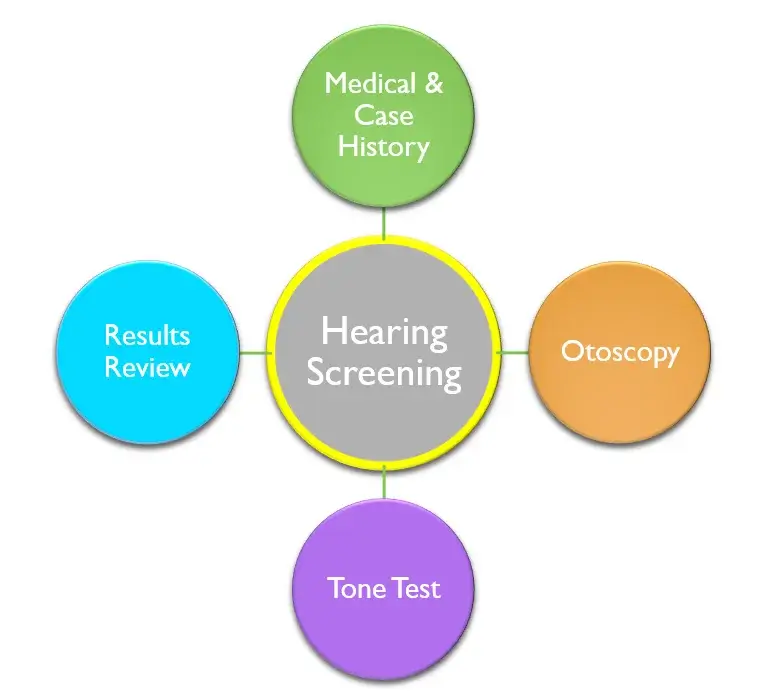Blog
Blog
What’s the difference between hearing screening and diagnostic hearing evaluation?

Hearing screenings and diagnostic hearing evaluations are vastly different tests that deliver different results. Only one of these tests will offer a complete picture of your hearing loss, possible causes and the best treatments. Here are the differences between a hearing screening and a diagnostic hearing evaluation.
Hearing screenings
A hearing screening is the most basic form of hearing test. It’s the equivalent of an eye chart in an optometrist’s clinic. It’s a preliminary “pass” or “fail” test that shows you if more testing needs to be done.
You’ve probably undergone a hearing screening at least once in your life. While wearing headphones, you’re exposed to a series of beeps at different tones and frequencies. The hearing expert asks you to raise your hand if you can detect the sound. A hearing screening will show if there’s evidence of hearing loss, but it’s not enough to determine its type or degree.
What to expect during a hearing screening
When you attend a hearing screening, a hearing expert will carry out the following steps:
- Review your medical and case history
- Conduct an otoscopy to look at the structures of your ear
- Conduct a tone test like the one described above
- Review the results with you
A hearing screening has no diagnostic value.
Diagnostic hearing evaluations

Audiologists and Hearing Aid Practitioners at Soundwave conduct diagnostic hearing evaluations to check and treat your entire hearing system. They give you a thorough understanding of the type and degree of hearing loss and the possible causes. They’ll also provide treatment options or counselling for adaptive living.
During a hearing evaluation, an audiologist will conduct a series of tests to detect hearing loss and the function of the middle and inner ear. The assessment will also test your ability to understand spoken words in quiet and noisy environments and determine the faintest level at which you can understand spoken words.
What to expect during a diagnostic hearing evaluation
When you undergo a diagnostic evaluation, an audiologist will take the following steps:
- Review your medical and case history
- Conduct an otoscopy
- Conduct a middle ear test
- Conduct an inner ear cell test
- Conduct a tone test
- Conduct a speech clarity test
- Conduct a listening-in-noise test
- Review the results with you
- Refer you to medical specialists, if needed
- Provide you with a written report
Based on the results, your audiologist will recommend the best way forward.
Hearing tests in Calgary, Lethbridge, Grande Prairie and High River
Soundwave Hearing Care is a leader in comprehensive diagnostic hearing tests and evaluations in Calgary, Lethbridge, Grande Prairie and High River. Contact us today to book an appointment.
All the blogs are reviewed and edited by our clinic's lead audiologist, Dr. Anne Wooliams. Dr. Woolliams is an experienced audiologist specialized in pediatric audiology, auditory processing, and tinnitus/sound sensitivity therapy. She is dedicated to providing top-notch hearing care and helping her clients improve their language and communication abilities. Dr. Woolliams' expertise in literature and linguistics, combined with her passion for helping people improve their language and communication, make her an incredibly valuable asset in the field of audiology. Learn more about Dr. Woolliams.

